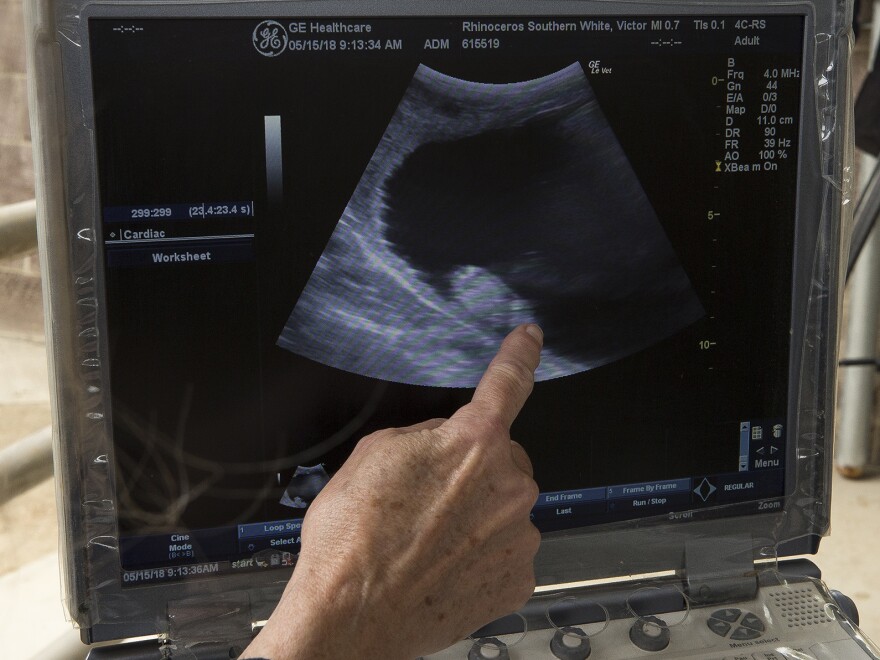There may be hope for the nearly extinct northern white rhino yet, thanks to the pregnancy of a closely related subspecies.
"Victoria," a southern white rhino in California, was impregnated through artificial insemination, researchers announced on Thursday.
"It's very exciting because this is our first pregnant rhino from artificial insemination here at the San Diego Zoo Safari Park," Barbara Durrant, director of reproductive sciences at the San Diego Zoo Institute for Conservation Research, told NPR.
The embryo is almost 2 months old and will develop for about 14 more months. It measures just a little over an inch — about the length of a double-A battery, reported NPR affiliate KPBS.
The effort took four months and many people, Durrant said. Scientists conducted frequent ultrasounds to monitor the fertility of six females. Lab personnel froze southern white rhino semen. Veterinarians anesthetized Victoria for the impregnation procedure.
The researchers' goal is for Victoria to someday give birth as a surrogate mother to a northern white rhino, a close subspecies for which only two remain.

The scientists have tissue, sperm and cell lines from 12 northern white rhinos, said Durrant. "We feel confident that the embryo transfer would be successful between the two subspecies. The one thing we are lacking is northern white rhino eggs."
An embryo could be fashioned through genetic technology. That means using frozen skin cells from dead northern white rhinos to make stem cells and, eventually, sperm and eggs.
"This has only been done in one species before and that was a mouse. It's a big step from a mouse to a rhino. But it is possible," said Durrant.
The northern white rhino once roamed in southern Chad, the Central African Republic, southwestern Sudan, northern Democratic Republic of the Congo and northwestern Uganda, according to the World Wildlife Fund. But their populations were decimated because people saw profits in their horns.
"They were poached to extinction in the wild," said Durrant. "We will feel we accomplished our goal if we can then return them to a safe place to Africa."
Copyright 2021 NPR. To see more, visit https://www.npr.org.






